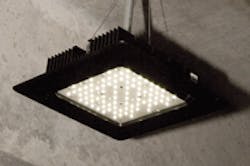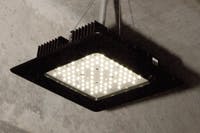Newsworthy
Survey: Many Tenants Not Prepared for a Building Emergency
As building owners struggle with ways to best equip their tenants with emergency-response training, a recent survey finds that they could be doing a much better job.
San Francisco-based MarketTools conducted a national survey of more than 500 tenants for Prepared Response, a Seattle developer of tenant safety systems for a variety of building types. While more than 70 percent of respondents said they've had emergencies in their buildings, over 50 percent said they did not know where their emergency plan was located, and 54 percent had never even looked at the plan.
"Preparedness is the key to saving lives and property during emergencies," says Peter Lucarelli, retired assistant fire chief to the Los Angeles City Fire Department. "It's paramount that property managers educate tenants about safety procedures and provide all occupants with a method to quickly access emergency procedures."
The survey results found that building owners don't always have comprehensive emergency plans. Most buildings are required by fire code to have emergency action plans and conduct drills; according to the survey, however, most of the drills conducted are fire drills (86 percent). While power outages represent 73 percent of all building emergencies, only 23 percent of surveyed buildings conduct drills focused on power outages. Other drills are conducted in an even smaller number of buildings: 11 percent of buildings conduct drills for bomb threats, 9 percent conduct drills for terrorist attacks, 8 percent conduct drills for earthquakes, and 7 percent conduct drills for violent intruder incidents.
Raleigh Aims to Become an "LED City"
Raleigh, NC, plans to widely deploy LED lighting over the next 18 months in hopes of becoming an "LED City." This living laboratory is designed to deliver the economic, environmental, and usage benefits of LEDs to Raleigh citizens. The LED lighting will serve a number of lighting applications, including garage and parking lot lights, street lights, architectural and accent lighting, portable lighting, and pedestrian and walkway lighting. Raleigh first installed LED lighting in a municipal building's parking garage in December 2006; it has already quantified a 40-percent energy savings.
According to a new report prepared for the Washington, D.C.-based U.S. Department of Energy (DOE) by Navigant Consulting Inc., Chicago, this type of LED usage may provide a preview of what the world will be like two decades from now. The report, "Energy Savings Po tential of Solid State Lighting in General Illumination Applications," found that LEDs and OLEDs could save 348 million kilowatt-hours of electricity by 2027.
GSA Incorporates New Accessibility Standard
The U.S. General Services Administration (GSA), Washington, D.C., will incorporate a new accessibility standard at its 7,100-plus leased locations to increase access to facilities designed, built, altered, or leased with federal funds. These new standards will apply to all buildings that will be leased as a result of solicitations for offers on or after Feb. 7, 2007. The new Architectural Barriers Act Accessibility Standard is a result of recent evaluation by the Washington, D.C.-based U.S. Access Board of the various standards and its decision to merge them into a single standard for federal buildings. It addresses access to joint-use areas, accessible routes to primary function areas, restrooms, and other space and elements. GSA typically handles over 1,000 leases per year that will be affected and estimates that, in the next 10 years, the new standard will encompass most of its leased inventory.
Hilton Receives Green Certification & Award
The Hilton Vancouver Washington recently received LEED certification from the Washington, D.C.-based U.S. Green Building Council (USGBC), making it the first LEED-certified Hilton in the world. Designed by Fletcher Farr Ayotte Architects in Sacramento, CA, the hotel opened in downtown Vancouver, WA, in 2005. Hotel management is now turning its attention to greening the hotel's operations. This includes a plan for reducing waste and increasing recycling throughout the facility, as well as discussions with Green Seal (www.greenseal.org), a non-profit organization based in Washington, D.C., that promotes the manufacture, purchase, and use of environmentally responsible products and services. The Washington State Hotel and Lodging Association awarded the Hilton Vancouver Washington an Enviro-Management Award for adopting forward-thinking policies and environmentally responsible practices.
ASHRAE Opens BACnet Addenda for Review
The Atlanta-based American Society of Heating, Refrigerating, and Air-Conditioning Engineers (ASHRAE) released six proposed addenda to its BACnet standards for public review in March. If approved, they would become part of Standard 135, BACnet® - A Data Communication Protocol for Building Automation and Control Networks, and Standard 135.1, Method of Test Conformance to BACnet. Proposed addendum j to BACnet-2004 will add physical access control to BACnet's support for building automation, proposed addendum g to 135-2004 will allow a new means for securing BACnet network communications, and proposed addendum i presents several extensions to the BACnet standard to support lighting-control systems.
The BACnet committee continues its work on a broad range of items, including the development of profiles for VAV controllers and VFDs, incorporating wireless capabilities, accommodating and adopting new IP technologies, and extending conformance testing to cover new BACnet capabilities.
Study Finds Deadly Bacteria on Common Hospital Equipment
Healthcare facility professionals should heed the caution of a recent study, commissioned by EquipSystems, a Brooklyn, NY-based hospital equipment-management company. It found dangerous levels of antibiotic-resistant bacteria, yeasts, and fungi on common, high-traffic hospital equipment - items that can be frequently overlooked in standard disinfection practices. Completed in an actual hospital setting, the study tested over-the-bed tables, stretchers, and geri chairs. It was designed to assess patient-care equipment to determine the amount of bacteria, including vancomycin-resistant enterococci (VRE), yeasts, and fungi, on surfaces before and after disinfection. Transmitted through human-to-human or surface-to-human contact, VRE is responsible for an estimated 10 percent of all hospital infections. Over-the-bed trays and geri chairs were cleaned daily by the hospital staff, but not singled out for disinfection.


